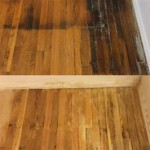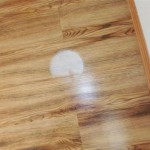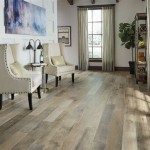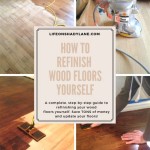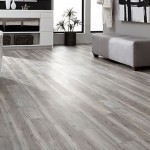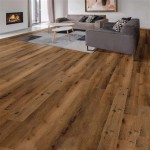Outdoor Deck Flooring Covering: A Comprehensive Guide
Outdoor decks provide valuable living space, extending homes into the outdoors. The choice of decking material significantly impacts the aesthetic appeal, functionality, and longevity of this outdoor area. Selecting the right outdoor deck flooring covering requires careful consideration of factors such as climate, intended use, budget, and personal preferences. This article provides a comprehensive overview of various outdoor deck flooring covering options, their advantages, disadvantages, and relevant considerations for informed decision-making.
Understanding Key Considerations Before Selecting Deck Flooring
Before delving into specific decking materials, it's crucial to understand the key factors that influence the selection process. These elements will help narrow the options and ensure the chosen material meets the specific needs and priorities.
Climate and Weather Exposure: The local climate plays a crucial role in determining the suitability of different decking materials. Areas with high humidity, heavy rainfall, or extreme temperature fluctuations require materials that are resistant to moisture damage, warping, and cracking. Consider the potential for fading due to UV exposure, especially in sunny climates. Coastal regions require materials that can withstand saltwater corrosion.
Intended Use and Traffic: The intended use of the deck influences the durability requirements of the flooring. Decks used for heavy foot traffic, outdoor dining, or entertaining require a more robust and wear-resistant material than decks primarily used for relaxation. Consider the potential for scratches, stains, and indentations based on the anticipated activities.
Budget and Long-Term Cost: The initial cost of decking materials can vary significantly. However, it is essential to consider the long-term cost, including maintenance, repairs, and replacement. Some materials may have a higher upfront cost but require less maintenance and have a longer lifespan, resulting in lower overall expenses.
Aesthetics and Design Preferences: The aesthetic appeal of the decking material should complement the architectural style of the house and the surrounding landscape. Consider the color, texture, and grain pattern of the material to achieve the desired look. Various options exist, ranging from natural wood appearances to contemporary composite designs.
Maintenance Requirements: Different decking materials require varying levels of maintenance. Some materials require regular cleaning, sealing, or staining to maintain their appearance and protect them from the elements. Others are virtually maintenance-free. Consider the amount of time and effort one is willing to invest in deck maintenance when making a selection.
Environmental Impact: Consider the environmental impact of the decking material. Options include sustainably sourced wood, recycled composites, and materials with low volatile organic compound (VOC) emissions. Choosing environmentally friendly materials contributes to a more sustainable lifestyle.
Exploring Different Types of Outdoor Deck Flooring Covering
Several types of outdoor deck flooring coverings are available, each with unique characteristics, advantages, and disadvantages.
Wood Decking: Wood remains a popular choice for decking due to its natural beauty and warmth. Common wood decking options include:
Pressure-Treated Lumber: Pressure-treated lumber is a cost-effective option that is resistant to rot and insect infestation. However, it requires regular sealing and staining to maintain its appearance and protect it from moisture damage. It can also be prone to splitting and warping over time.
Redwood: Redwood is a naturally durable wood that is resistant to rot and insects. It has a rich, reddish-brown color that adds warmth and character to a deck. Redwood requires less maintenance than pressure-treated lumber but can be more expensive.
Cedar: Cedar is another naturally durable wood that is resistant to rot and insects. It has a light, reddish-brown color and a distinctive aroma. Cedar is more stable than redwood, meaning it is less likely to warp or crack. However, it can be more expensive than redwood.
Hardwoods: Hardwoods, such as ipe, mahogany, and teak, are extremely durable and resistant to rot, insects, and wear. They have a rich, luxurious appearance and require minimal maintenance. However, hardwoods are the most expensive wood decking option.
Composite Decking: Composite decking is made from a combination of wood fibers and plastic. It is a low-maintenance alternative to wood decking that is resistant to rot, insects, and fading. Composite decking comes in a variety of colors and styles and can be molded to resemble natural wood. However, it can be more expensive than pressure-treated lumber.
Plastic Decking: Plastic decking is made entirely from recycled plastic. It is a very low-maintenance option that is resistant to rot, insects, and fading. Plastic decking is also slip-resistant and splinter-free, making it a safe choice for families with children or pets. However, it can be more expensive than pressure-treated lumber and may not have the same natural look as wood decking. Plastic decking can also get very hot in direct sunlight.
Aluminum Decking: Aluminum decking is a durable and low-maintenance option that is resistant to rot, insects, and fire. It is also lightweight and easy to install. Aluminum decking can be powder-coated in a variety of colors and styles. However, it can be more expensive than wood decking and composite decking.
Tile and Stone Decking: Tile and stone are durable and aesthetically pleasing options for deck flooring. They are resistant to rot, insects, and fire. Tile and stone decking can be used to create a variety of looks, from traditional to contemporary. However, they can be more expensive than other decking options and require a solid, level sub-structure for installation. Special care must be taken to ensure proper drainage and to select materials that are frost-resistant in colder climates.
Other Decking Options: Other decking options include rubber decking, which is made from recycled tires, and permeable pavers, which allow water to drain through them. These options are less common than the others listed above but may be suitable for specific applications.
Comparing Deck Flooring Materials: Advantages and Disadvantages
A thorough evaluation of the advantages and disadvantages of each material is essential for making an informed choice. The following table summarizes the key characteristics of the most common decking materials:
| Material | Advantages | Disadvantages | |-------------------|-----------------------------------------------------------------------------------------------------------|---------------------------------------------------------------------------------------------------------| | Pressure-Treated | Affordable; Resistant to rot and insects | Requires regular sealing and staining; Prone to splitting and warping | | Redwood | Naturally durable; Resistant to rot and insects; Attractive color | More expensive than pressure-treated lumber; Can be susceptible to color fading over time. | | Cedar | Naturally durable; Resistant to rot and insects; Attractive color; More stable than redwood | More expensive than redwood | | Hardwoods | Extremely durable; Resistant to rot, insects, and wear; Luxurious appearance; Low maintenance | Most expensive decking option | | Composite | Low maintenance; Resistant to rot, insects, and fading; Variety of colors and styles | More expensive than pressure-treated lumber; Can get hot in direct sunlight; May look less natural | | Plastic | Very low maintenance; Resistant to rot, insects, and fading; Slip-resistant; Splinter-free | More expensive than pressure-treated lumber; May not have natural look; Can get very hot in direct sunlight | | Aluminum | Durable; Low maintenance; Resistant to rot, insects, and fire; Lightweight | More expensive than wood and composite decking | | Tile/Stone | Durable; Aesthetically pleasing; Resistant to rot, insects, and fire | Expensive; Requires solid sub-structure and professional installation; Can be slippery when wet |
This table provides a general overview. Specific product variations within each material category may exhibit slightly different characteristics. Consulting with a decking professional is recommended for detailed product-specific information.
Ultimately, the best outdoor deck flooring covering depends on individual needs, preferences, and budget. Careful consideration of the factors discussed in this article will help homeowners make informed decisions that result in a beautiful, functional, and long-lasting outdoor living space.

Inexpensive Deck Floor Covering Ideas Flooring Outdoor Coverings

Outdoor Wpc Composite Wood Flooring Grain Floor Covering China Deck Decking Made In Com

Non Slip Wpc Floor Tile For Outdoor Deck Covering With Waterproof And Mositure Proof Features China Tiles Composite Made In Com

The Best Temporary Patio Flooring Options

Supply High Density Outdoor Solid Bamboo Deck Parquet Flooring Covering Whole Factory Fujian Golden Industry Co Ltd

Besto Wood Plastic Composite Patio Deck Tiles Diy Interlocking Decking Floor Tile Durable Maintenance Waterproof Outdoor Expore China Whole Boards And Wpc

Diy Projects And Ideas Deck Over Concrete Patio Flooring

4 Easy Diy Installation Patio Floor Covering Options

Arrak Wood Deck Tiles Look For Outdoor Floors

Wood Plastic Composite Waterproof Outdoor Deck Floor Covering For Garden China Wpc Decking Made In Com
Related Posts

